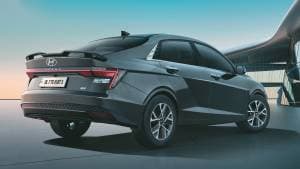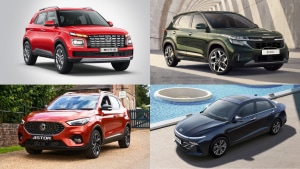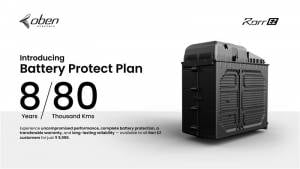Comparison: 2017 Hyundai Verna petrol AT vs Honda City petrol CVT
The Honda City has ruled the C-segment ring for a long time, though the Hyundai Verna has been closing in on it. The Korean manufacturer has been hard at work and the Verna has indeed come a long way. The City's 1.5-litre petrol engine though, continues to be a gem of a motor, one that's loved equally by enthusiasts for its refinement and performance, and by those looking for efficiency and reliability as well.
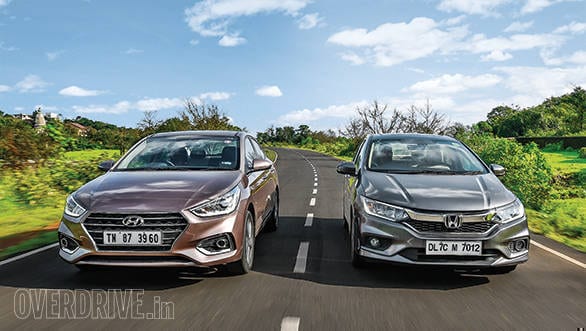 Is the new Hyundai Verna good enough to challenge the Honda City?
Is the new Hyundai Verna good enough to challenge the Honda City?
The previous generation Verna's 1.4-litre petrol engine wasn't really up there, but Hyundai has equipped the Verna with the bigger, more powerful 1.6-litre petrol engine now. Is it good enough to challenge the Honda? Find out we had to. And given the rising popularity of automatics, we thought it would be best to compare their automatic versions, so here it is.
Styling
The Verna is the all-new car here but the City received a comprehensive update recently, which means both cars look fresh. The City's sharp lines are a typical Honda design trait, and the rectangular headlights look even better with LED DRLs and all-LED headlamps. The thick, chrome slat on the grille and creases on the bumper add to the sharpness and the car looks very appealing, with a little hint of sportiness.
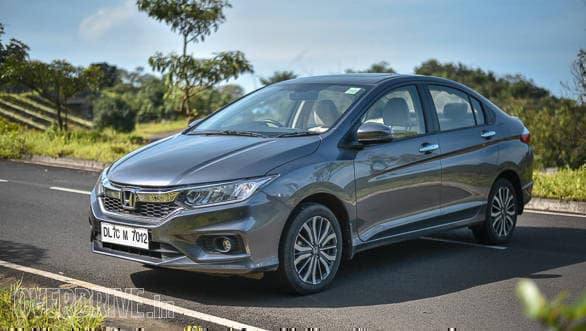 The Honda City boasts a lower, sporty stance
The Honda City boasts a lower, sporty stance
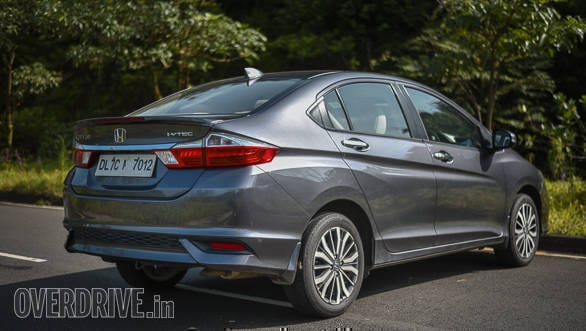 The Honda City still looks like an enthusiast's car while the Verna continues to look like an executive sedan
The Honda City still looks like an enthusiast's car while the Verna continues to look like an executive sedan
The Verna looks more European in comparison. The lights get a strip of LED 'pearls' under the headlamp that uses projector beams now, though the Verna misses out on LED headlights. Its sharper grille and chrome surrounds for the fog lights (also projectors) add to the chic appearance. The best angle to look at the Hyundai though is the rear three-quarter. The rakish tail lamp design is inspired by the Elantra and looks very appealing along with the high boot lid.
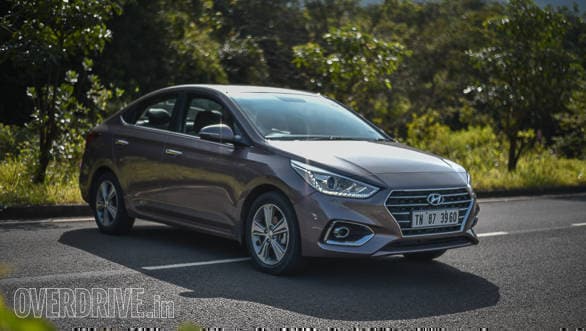 The 2017 Hyundai Verna looks a lot more European than its predecessor
The 2017 Hyundai Verna looks a lot more European than its predecessor
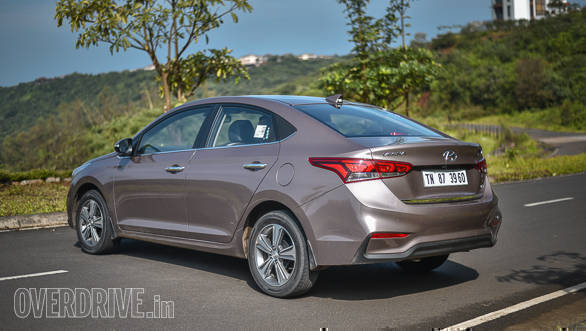 The Hyundai Verna's rear end looks inspired from the new Elantra's, particularly the tail lights
The Hyundai Verna's rear end looks inspired from the new Elantra's, particularly the tail lights
The City looks sportier from the rear with its little spoiler, while the Verna retains its tall boy stance as before. Both cars look extremely good and it isn't easy to choose one as the better looker. The City still looks like an enthusiast's car while the Verna continues to look like an executive sedan. The Verna did grab more eyeballs on the road though, and in our books it just about manages to nudge the City in this department.
Interiors
The City carries its air of sportiness inside with an all-black dashboard. The dash gets grey plastics on the top for a nice contrast, while a soft-touch panel above the glovebox lends it a sense of richness. The 6.9-inch display is housed in a gloss black panel that makes it look larger. In comparison the Verna's dash gets a two-tone beige-black finish which looks nice but not as sporty. The Verna's touchscreen is a 7-inch unit too but is flanked by air-conditioning vents and buttons which make it look smaller.
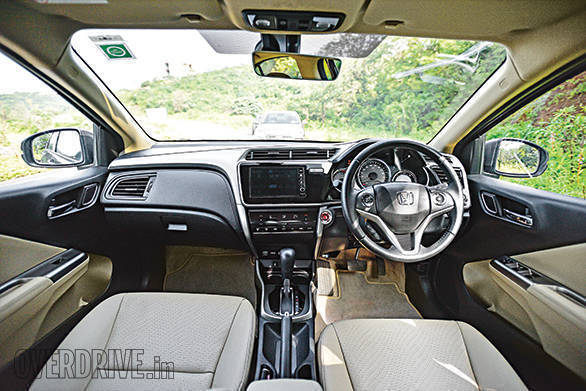 The Honda City's gets beige-black interiors too, but the dash is all-black and looks sportier.
The Honda City's gets beige-black interiors too, but the dash is all-black and looks sportier.
6.9-inch screen looks larger with its design and black surrounds
The City's touch panel for the air-conditioning controls looks swanky while the Verna gets traditional round knobs which work well but don't look as classy. The City's clocks echo its sporty theme with a three-pod layout, integrating a digital display for the vitals on the right. The Verna gets a more conventional-looking two-pod layout with a display in the centre. The Honda's three-spoke steering wheel feels sportier too, especially with its paddle shifters. The Verna gets the new steering wheel from the Elantra/Tucson and feels equally nice to hold though doesn't get flappy paddles.
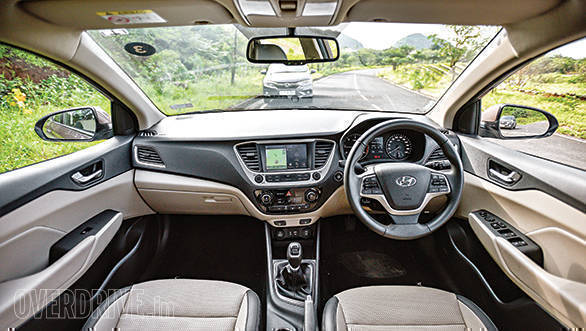 The Verna's 7-inch screen looks familiar, navigation is easy to use on the go. (Image of manual Hyundai Verna used for representational purpose)
The Verna's 7-inch screen looks familiar, navigation is easy to use on the go. (Image of manual Hyundai Verna used for representational purpose)
The City is also more spacious. Both cars offer similar space at the front but the City offers a roomier feel. Its dashboard extends far ahead and the windscreen is a lot further than the Verna's which adds to the sense of space. The Honda offers larger cubby holes and feels roomier from behind the wheel. The Verna is just as spacious if not more at the front, but doesn't feel as roomy. Storage spaces are aplenty in the Verna as well and just like the City, it gets a front arm rest with storage.
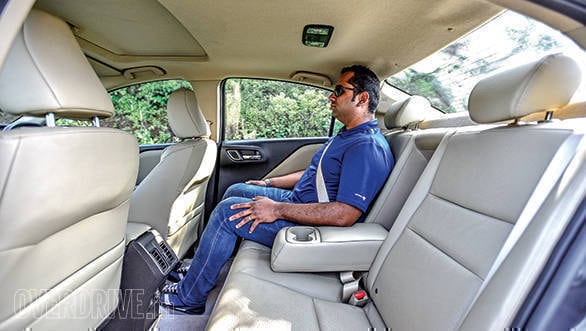 Rear leg and knee room are significantly better in the Honda City
Rear leg and knee room are significantly better in the Honda City
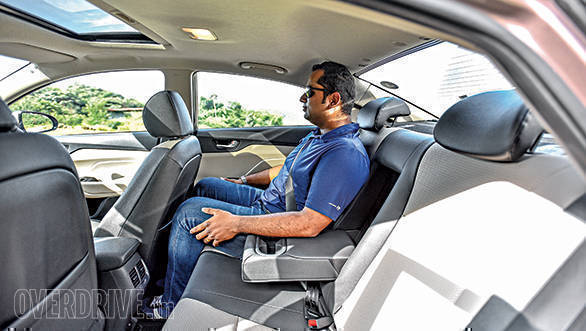 Rear leg and knee room isn't as good as the City, but the seat offers better under-thigh support
Rear leg and knee room isn't as good as the City, but the seat offers better under-thigh support
The City is clearly more spacious at the back though, offering significantly more leg and knee room. So if you are the chaueffer-driven types you will appreciate the amount of space it offers. The Verna doesn't offer as much space but it makes up for the lack of it with more shoulder room, under-thigh support and a plusher seat.
Equipment
The Verna comes loaded to the gills with features and equipment but the City isn't far behind now. The variants you see here are top of the line and both cars get six airbags each, and dual airbags are standard across the range on both. Both cars get keyless entry and push button starters, automatic headlights, rain sensing wipers, sunroofs and reverse cameras. The Verna gets Apple CarPlay and Android Auto, but the City only gets MirrorLink. What the City does get over the Verna is an HDMI port and the ability to play videos.
The Verna gets a manual rear blind, cornering headlamps and an impact sensing door unlock function, all of which aren't on offer in the City. The Verna's party trick though are its ventilated seats with cooling, again something the City doesn't get. The Verna also gets a handsfree function for the boot that opens it when you stand behind the car with the key in your pocket. On the whole, the Hyundai has the upper hand in terms of features and equipment.
Engines, performance and efficiency
The City's 1.5-litre, four-cylinder petrol engine is a gem of a motor. Offering 119PS and 145Nm, the engine is no less than a benchmark in terms of refinement, responsiveness and efficiency. The Verna's 1.6-litre, four-cylinder engine is slightly more powerful, offering 123PS and 151Nm. Both cars are quick to accelerate and get to speeds quickly but there's a big difference between their feel and power delivery thanks to their different transmissions.
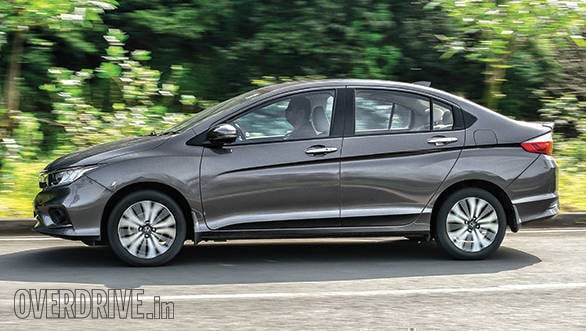 The City's 1.5-litre, four-cylinder petrol engine is no less than a benchmark in terms of refinement, responsiveness and efficiency
The City's 1.5-litre, four-cylinder petrol engine is no less than a benchmark in terms of refinement, responsiveness and efficiency
The City uses a CVT and suffers from the rubberband effect CVTs are known for. Drive enthusiastically and it sounds noisy, also robbing you of the feel you'd expect from a 119PS car. The Verna gets a new, six-speed torque converter that feels better in terms of sending 123 horses to its wheels. It sounds calmer and gear changes feel sportier too. We were unable to conduct a full-blown performance test but there's not much to tell the two cars apart as far as straight line acceleration is concerned, and both should post similar times.
 The Hyundai Verna's 1.6-litre, four-cylinder engine is slightly more powerful, offering 123PS and 151Nm
The Hyundai Verna's 1.6-litre, four-cylinder engine is slightly more powerful, offering 123PS and 151Nm
Hyundai's 1.6-litre engine is up there with the Honda in terms of refinement, though it is slightly more audible at highway speeds as compared to the City's engine which is very quiet. That said, you can barely tell whether the engine in either car is running or not at idle. The City is the more efficient car on the highway thanks to its CVT and returned 17.81kmpl as compared to the Verna's 14.66kmpl. The Verna was more efficient in city though, returning 9.38kmpl as compared to the City's 8.36kmpl.
Ride and handling
The Verna gets a stiffer suspension setup now which has made it immensely better in terms of handling, but has also resulted in a minor trade off in terms of ride quality. The City on the other hand balances ride and handling better, with a slightly more pliant ride than the Verna's despite its sportier handling. There's a little hint of judder in the Verna over bumps and potholes, something you don't feel in the City. The Verna though is a huge leap over its predecessor in terms of handling and feels a lot more confident and planted.
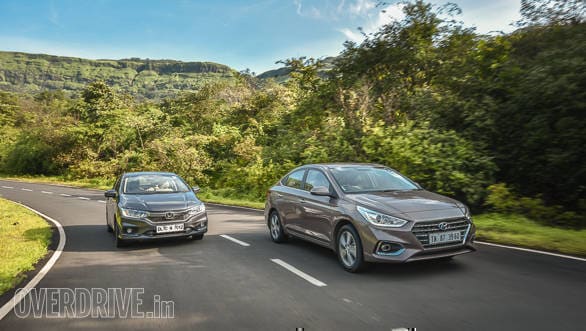 The two cars feel very close to each other in terms of highway stability, as both are equally adept at staying planted or making quick lane changes
The two cars feel very close to each other in terms of highway stability, as both are equally adept at staying planted or making quick lane changes
The two cars feel very close to each other in terms of highway stability, as both are equally adept at staying planted or making quick lane changes. The Verna is a vastly better handler now, especially at speed, and is a lot closer to the City around corners as well. Throw it into a fast bend and you notice how controlled bodyroll is, just like the Honda, thanks to the stiffer setup.
The Verna's steering weighs up well too, but still doesn't feel as communicative as the City's. On the whole the Verna is still not a driver's car like the City is, though it feels a lot closer to the Honda now. Driving positions in the two cars feel different too. The City feels sporty with its low slung seating that's appreciated by enthusiasts, while the Verna has you sit more upright, a stance that will be appreciated more by a larger chunk of buyers.
Verdict
This comparison test has turned out to be a lot closer than expected, thanks to the huge improvements to the Verna. It feels a lot closer to the City now, making it a lot better and more wholesome as a buy. The City has always been a fantastic car, but the new Verna is pretty much up there with it, be it in terms of performance, refinement, efficiency, handling or comfort. Of course, it looks a lot more desirable and classier than it ever was, while continuing with Hyundai's tradition of being loaded with features and equipment, making it a better overall package.
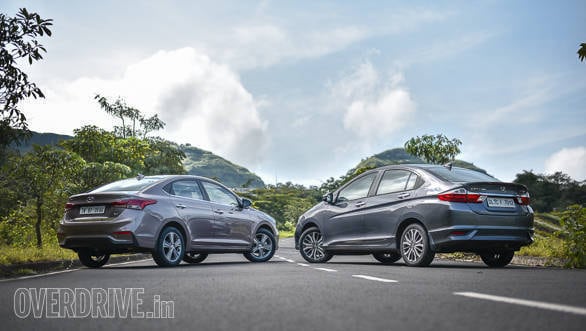 The Honda City has always been a fantastic car, but the new Hyundai Verna is pretty much up there with it
The Honda City has always been a fantastic car, but the new Hyundai Verna is pretty much up there with it
The Honda City is more spacious, offers a slightly plusher ride and is a better driver's car even today, but these virtues aren't good enough to justify its premium of nearly one and half lakh rupees. The top end City automatic retails at Rs 16.08 lakh on-road Mumbai as compared to the Verna's price of Rs 14.64 lakh. The Verna thus manages to nudge past the City, finally, coming across as the sweeter deal here.
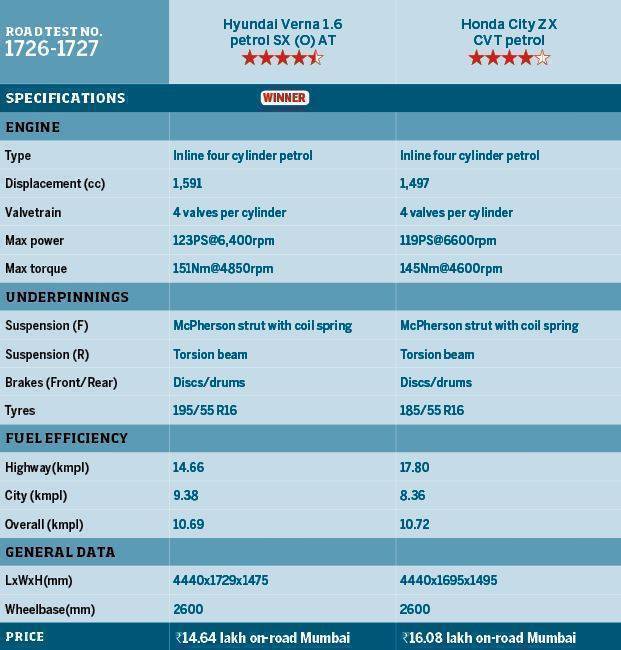
Starts Rs 10.9 Lakhs
1497cc
Manual
100
145
17.8 Kmpl
Starts Rs 9.31 Lakhs
1493cc
Automatic
115
250
-NA-
